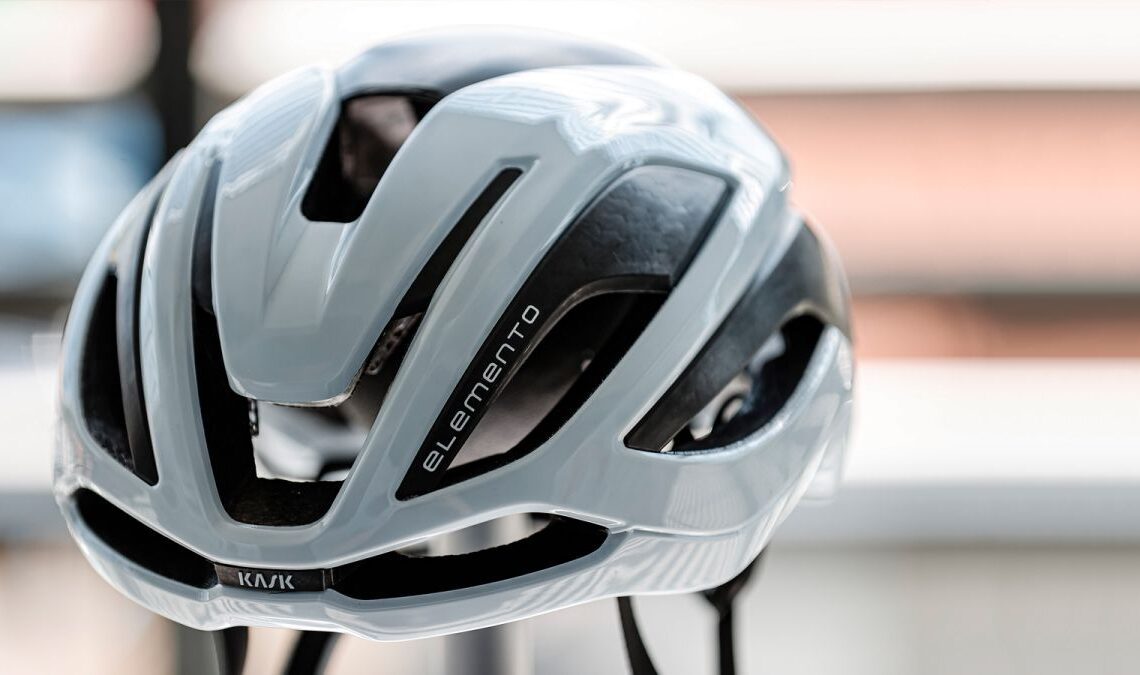Kask has today unveiled a brand new road bike helmet that it says will “revolutionise the world of cycling” as we know it. It’s called the Elemento, it uses carbon fibre plates to replace EPS foam, and the same 3D printed technology found atop the saddles of Fizik and Specialized for its pads. It is a new addition to the Kask lineup, and boasts a five-star Virginia Tech rating.
With the introduction of multiple new approaches, the Elemento certainly appears to be a technological step forward, and unsurprisingly, the price is reflective of that. At £335 / €375 / $400, it’s the most expensive road helmet we’ve seen to date, and when questioned on the matter, Kask is quick to point out that it is aimed at “elite athletes competing in the world’s best road, cross-country, cyclocross, and gravel events, as well as cyclists who are driven by the quest for ultimate performance.”
Its development began at the Ineos Grenadiers training camp hotel in Majorca, 2019, with a meeting entitled ‘New Protone.’ However, Kask says that it quickly became a much larger project that sought to create something that wasn’t just an iteration of a former success, but a revolutionary product in its own right. So confident are they in the result, that product manager Luca Viano told Cyclingnews “In the next years, everything you see will gather something from the Elemento.”
Despite its launch today, the Elemento has actually been in the public eye for some time. It was first spotted on the heads of Ineos Grenadiers 10 months ago at the 2022 Tour de France, but has been held up by the same supply chain issues that have plagued much of the bike industry of late.
New technologies
Two main innovations underpin the new helmet’s design. The first of which is a technology Kask calls Fluid Carbon 12, described as a “composite technopolymer capable of absorbing more energy from an impact than traditional materials, and then able to distribute that force more evenly across the helmet.”
Specifically, it is a series of carbon composite plates that are used in place of much of the helmet’s EPS (expanded polystyrene) foam. Together, they create a shell not dissimilar to tectonic plates. They are held together by joints that enable them to move, in turn absorbing and sharing forces from impacts.
Click Here to Read the Full Original Article at CyclingNews RSS Feed…

